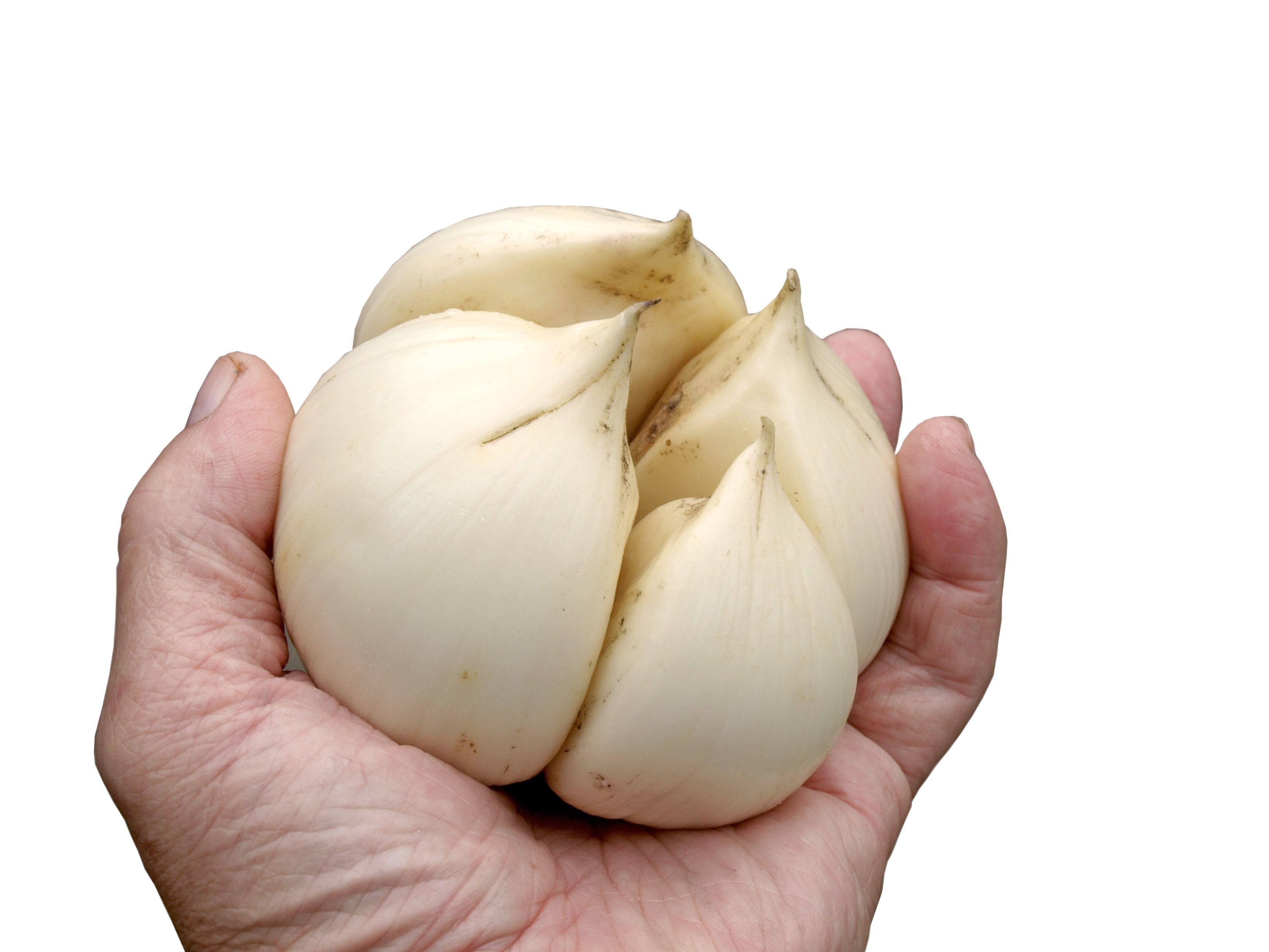High-Throughput Effect-Directed Analysis of COX-2 Inhibitors by HPTLC with Bioassay MS
For the first time, inhibitors of a cyclooxygenase isoform were found in Allium ampeloprasum L., specifically the giant or “elephant” garlic grown in the Chiloé Archipelago.
A recent study in the Journal of Chromatography A established a platform of high performance thin-layer chromatography (HPTLC) coupled to bioassay mass spectrometry (MS) to analyze bioactive molecules with inhibitory activity over an isoform of the cyclooxygenase enzyme (COX-2) at high throughput (1). The authors said they based the assay on the indirect measurement of the transformation of arachidonic acid, a prominent fatty acid, into its enzymatic derivative prostaglandin (PG) with the colorimetric co-substrate N,N,N’,N’-tetramethyl-p-phenylenediamine, also known as Wurster’s blue or TMPD.
Giant garlic | Image Credit: © Viesturs Kalvans - stock.adobe.com

The research, a collaborative effort between scientists at three universities in Chile, tested the usefulness of the devised method on the giant or “elephant” garlic of the Chiloé Archipelago off the Chilean coast, belonging to the species Allium ampeloprasum L., a family which also includes leek and pearl onion (1). According to the researchers, COX-2 inhibitors were found in the ethanol:water (8:2 v/v) extract of giant garlic for the first time, namely γ-glutamyl-S-allyl-l-cysteine and γ-glutamyl-S-(trans-1-propenyl)-L-cysteine.
In this study, the authors detailed the search for any novel, bioactive molecules in nature that could have inhibitory effects on COX-2, but also offer better preservation of cardiovascular function than prescribed nonsteroidal anti-inflammatory drugs (NSAIDs) (1). Cyclooxygenase, from which COX-2 is derived, is described by the researchers as an active participant in the inflammatory process, which triggers responses in injured tissues such as swelling, coagulation, and protein migration. Among cyclooxygenase isoforms, COX-2 is considered more significant to the perpetuation of inflammation because its sensitivity to mediators results in the highly stimulated production of prostaglandins (PGs).
Food or plant extraction and quantification for the purpose of discovering new bioactive molecules that fit the desired objectives has been performed previously with liquid chromatography (LC), specifically high performance (HP)LC, or gas chromatography (GC), but in this experiment, effect-directed analysis (EDA) was applied to help accelerate the process. EDA is defined simply by the authors with two basic steps: separation of molecules from the matrix, and evaluation of obtained fractions for biological activity (1). By combining EDA with high performance thin-layer chromatography (HPTLC), the researchers said they were able to determine the bioassay in situ without mobile phase incompatibility, as all solvents are fully evaporated.
Using this method, the researchers reported using the lowest possible concentration of arachidonic acid and TMPD to achieve proper TMPD oxidation product formation, and subsequently, the lowest enzyme amount required for COX inhibitor detection on HPTLC plates—75% less than previous studies had attempted (1). Regarding the two isomers the study revealed in the extracts of the giant garlic of Chiloé, the research team suggested continued investigation in order to establish each of their types of inhibition, and the potential pharmacological potency therein.
Reference
(1) Oyarzún, P.; Carrasco, J.; Peterssen, D.; et al. A High Throughput Method for Detection of Cyclooxygenase-2 Enzyme Inhibitors by Effect-Directed Analysis Applying High Performance Thin-Layer Chromatography–Bioassay–Mass Spectrometry. J. Chromatogr. A 2023, 1711, 464426. DOI: 10.1016/j.chroma.2023.464426
Study Explores Thin-Film Extraction of Biogenic Amines via HPLC-MS/MS
March 27th 2025Scientists from Tabriz University and the University of Tabriz explored cellulose acetate-UiO-66-COOH as an affordable coating sorbent for thin film extraction of biogenic amines from cheese and alcohol-free beverages using HPLC-MS/MS.
Quantifying Microplastics in Meconium Samples Using Pyrolysis–GC-MS
March 26th 2025Using pyrolysis-gas chromatography and mass spectrometry, scientists from Fudan University and the Putuo District Center for Disease Control and Prevention detected and quantified microplastics in newborn stool samples.
Multi-Step Preparative LC–MS Workflow for Peptide Purification
March 21st 2025This article introduces a multi-step preparative purification workflow for synthetic peptides using liquid chromatography–mass spectrometry (LC–MS). The process involves optimizing separation conditions, scaling-up, fractionating, and confirming purity and recovery, using a single LC–MS system. High purity and recovery rates for synthetic peptides such as parathormone (PTH) are achieved. The method allows efficient purification and accurate confirmation of peptide synthesis and is suitable for handling complex preparative purification tasks.








